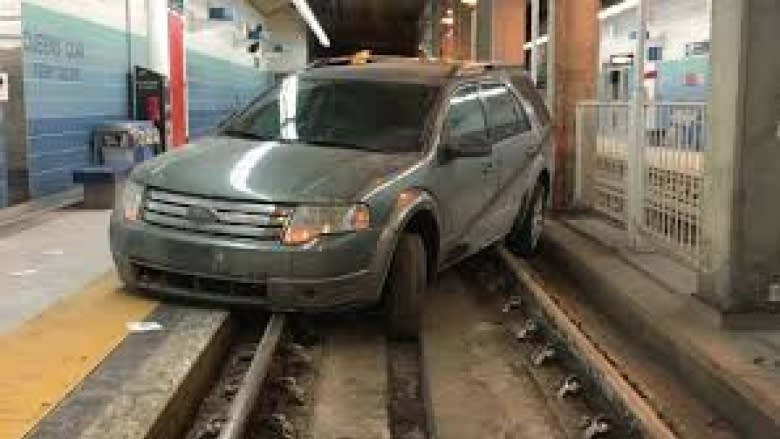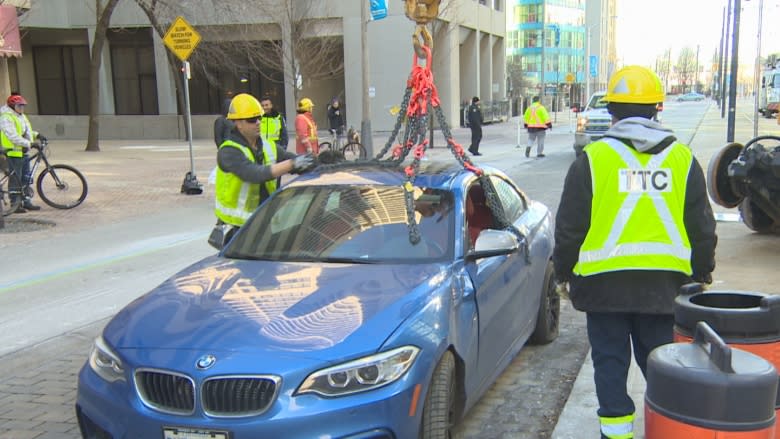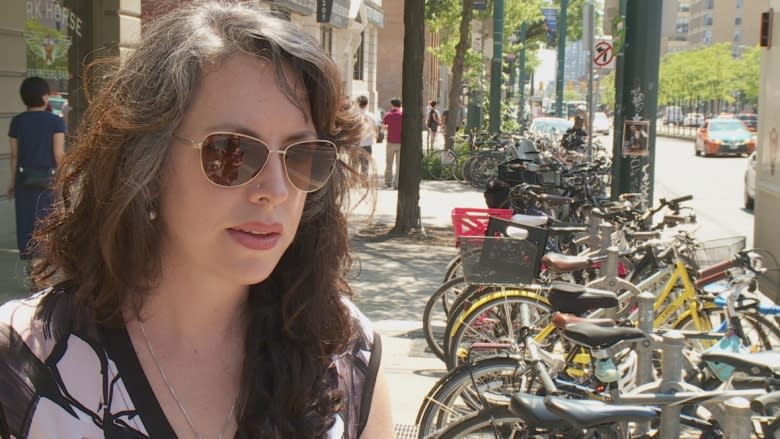TTC tunnel mishaps spark calls for Queens Quay design review
Waterfront Toronto is defending its design for the revamped Queens Quay despite criticism from a TTC board member who calls it confusing and says it needs a rethink.
Alan Heisey, vice-chair of the Toronto Transit Commission board, has asked for a review of the entire LRT right of way, which has had issues with drivers entering the tunnel meant for streetcars only. So far, 25 vehicles have ended up in the tunnel since the revitalized street reopened in 2015.
The most recent incidents happened earlier this month, when two motorists drove down the tunnel in a week, prompting the TTC to announce it is installing a gate.
"The question is not just the tunnel. The question is the overall design of Queens Quay. It is not clear. It's not understandable," said Heisey.
"This is what happens when designers design places, but don't design workable places. And I don't think transportation engineers and the TTC had enough input into the design of the Queens Quay LRT and it's a cautionary tale for what should not happen east of Yonge."
Interim TTC CEO Rick Leary said city and TTC engineers will be conducting a review of the right of way.
"They're going to take a look at that whole length and see what we can do possibly differently and report back," said Leary "All the way along the line. We'll look at the length of the line."
Christopher Glaisek, the vice president for planning and design at Waterfront Toronto, says the agency is open to any feedback, but points out there are ongoing efforts to monitor the street's performance and to make adjustments to the layout of the street as required.
And he says designing the revitalized Queens Quay involved city transportation staff, the TTC and traffic engineers from two international firms
"It was not just designed just by planners. It was certainly design in a collaborative group," Glaisek said. "But it is an atypical configuration and so it has posed some challenges."
Glaisek said the issue with vehicles entering the streetcar tunnel has required new signs to give drivers better cues about how to use the street.
"All the adjustments, all that learning will be fed into the design of the street going east," Glaisek said.
Another complaint about the Queens Quay redesign — with its multiple modes of transportation sharing the same stretch — has been some confusion about where cyclists should be.
Yvonne Bambrick, author of The Urban Cycling Survival Guide, says the Martin Goodman Trail — which runs from the Beach in the east through Queens Quay to the Humber River in the west — is actually a "mixed use" path and not solely for bikes.
"In the Queens Quay section there's dedicated pedestrian sidewalk space and you also have what feels like to those on bike like a cycle track, but it's actually a shared trail," said Bambrick, "So you have people jogging there, tourists walking, people with dogs and kids and people who don't understand the differences in those spaces."
Bambrick says then there are the weekend warriors clad in spandex who are out for a good workout and they want to ride fast.
"Some of those types of uses mix poorly in this area, unfortunately," said Bambrick, who got in a collision with another cyclist on Queens Quay bike path last year.
Glaisek at Waterfront Toronto says the popularity of the area for cyclists was clearly underestimated.
"In a way, Queens Quay was more successful than we expected it to be in terms of the number of users," he said, adding planners had expected 40 cyclists an hour, whereas staff have observed as many as 500 cyclists an hour.
"Which makes it the busiest cycling facility in the city by a factor of two and I don't think we quite anticipated the level of intensity of use," Glaisek said.
He says in retrospect they would have used a different design had they known there would be so many cyclists.
"That is another aspect that we will certainly look at with the eastern portion of the street," Glaisek said.





